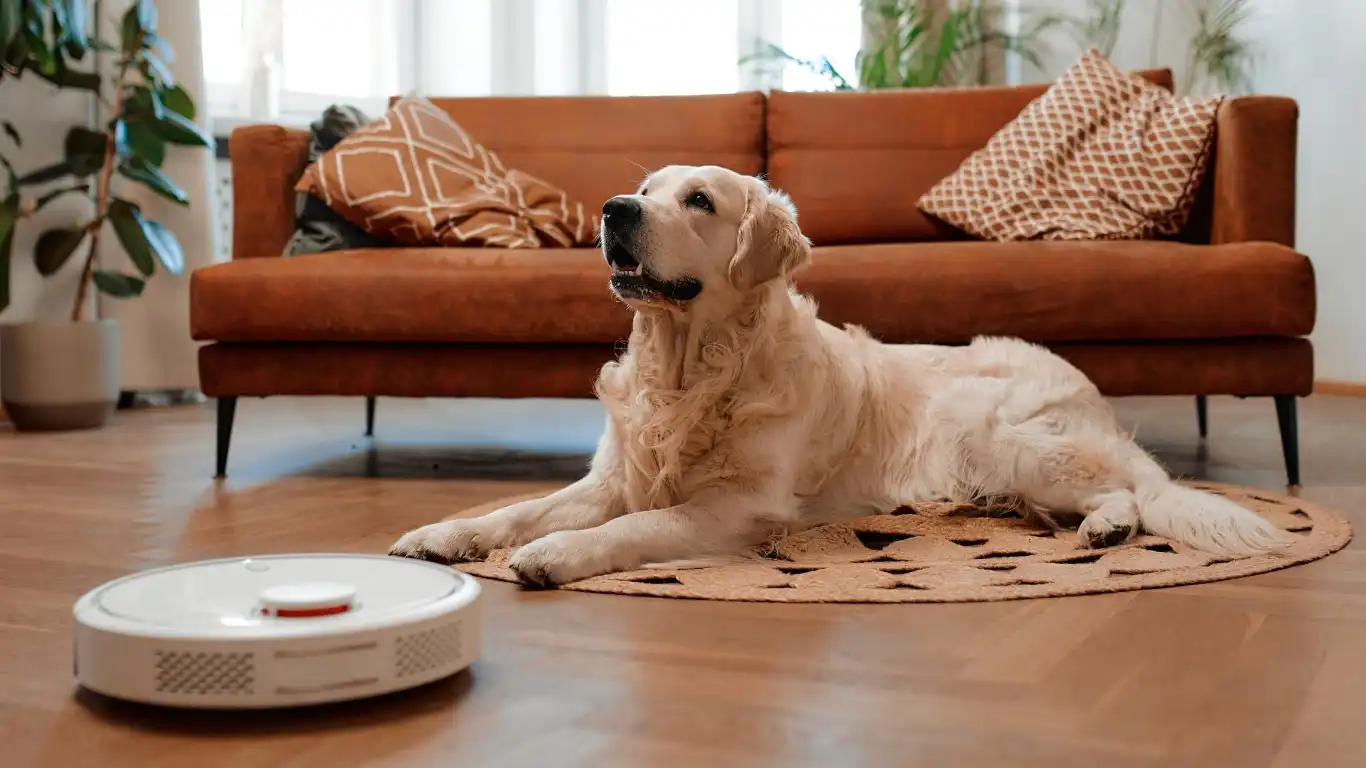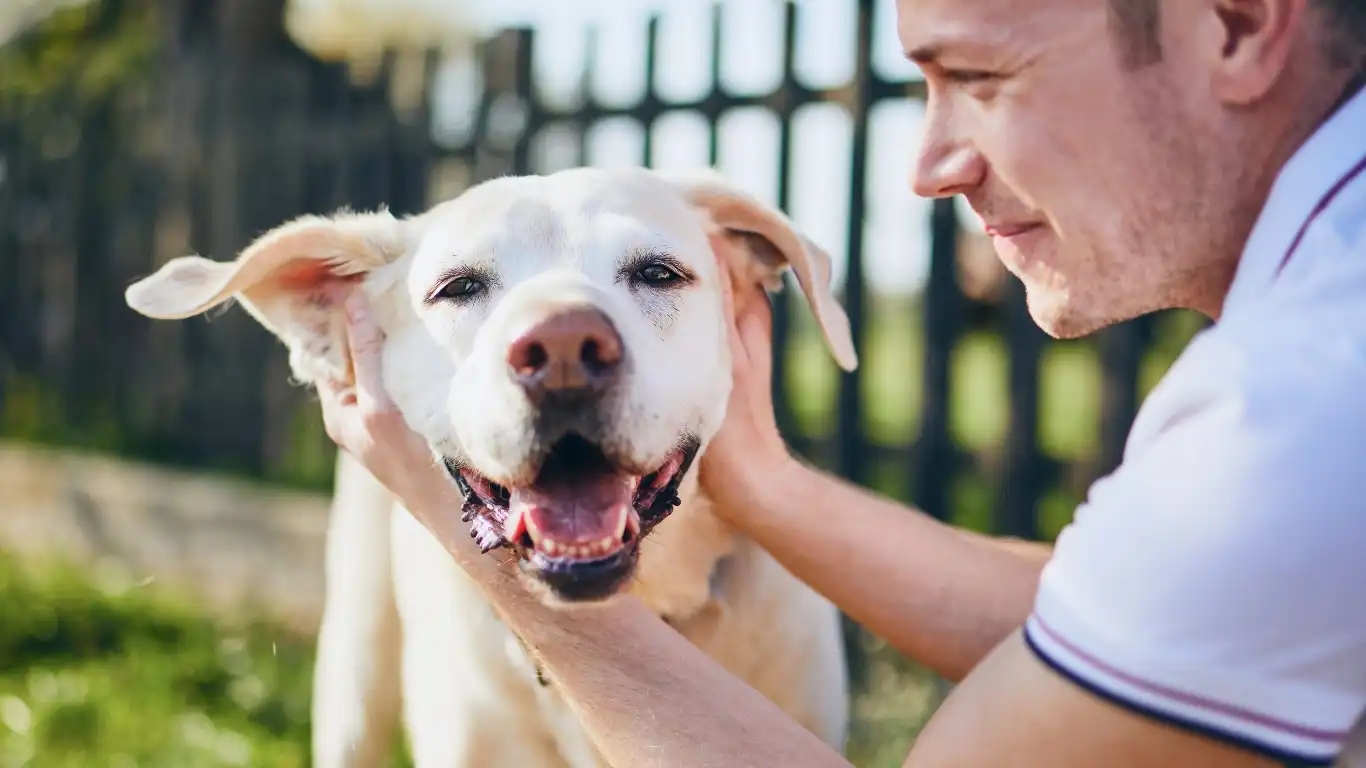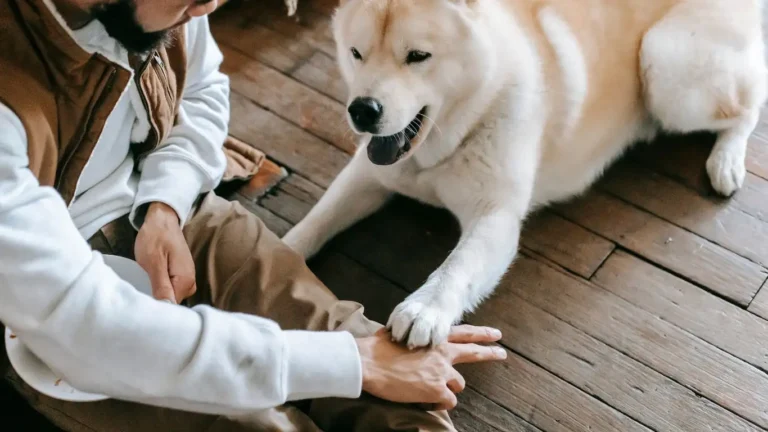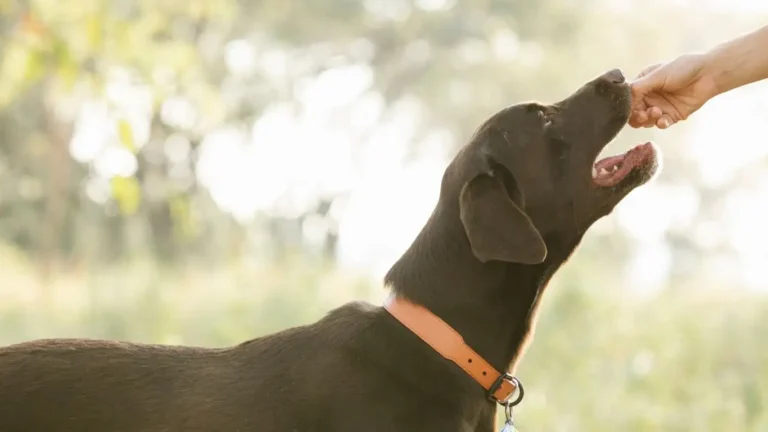Best Ways to Stop a Dog from Marking Territory Inside: Proven Solutions
If you’ve ever had a dog that marks its territory inside the house, you know how frustrating and stressful it can be. As a pet nutritionist and pet care expert who has worked closely with dogs in veterinary clinics, I’ve seen this issue firsthand and helped countless pet parents deal with it. It’s not just about the mess, but about understanding what’s driving this behavior and how we can address it. Whether your dog is a puppy or an adult, marking can be a challenging habit to break, but it’s certainly not impossible. In this article, we’ll dive into the best ways to stop a dog from marking territory inside, and I’ll share some insights that have worked in my experience. From behavioral training tips to understanding underlying health concerns, let’s explore how you can create a happier, cleaner home for both you and your furry friend.
Understanding Why Dogs Mark Inside

Before we can tackle the issue, it’s important to understand why dogs mark their territory. Marking is a natural behavior for dogs, and it’s something they do to communicate with other animals or assert dominance. However, when this behavior is happening inside your home, it can be a problem. Marking inside typically indicates a few different things:
- Territorial Behavior: Dogs are territorial creatures, and when they feel like their space is being invaded, they may mark as a way of claiming it. This can happen if there are new pets in the house, new people, or even changes in the environment that make them feel unsettled.
- Stress and Anxiety: Stressful situations, such as separation anxiety or changes in routine, can cause a dog to mark inside. For example, a dog might start marking when you leave the house or when there’s a lot of activity in the home.
- Health Problems: Sometimes, marking inside could be related to medical issues like urinary tract infections (UTIs), bladder problems, or hormone imbalances. It’s always a good idea to rule out health concerns before jumping to conclusions about behavior.
- Untrained Behavior: Puppies and even adult dogs that haven’t been properly house-trained might not understand where it’s appropriate to mark. This can be especially common in puppies who are still figuring out their place in the world.
Signs Your Dog Is Marking and Not Just Urinating

It’s important to distinguish between marking and urination. While both involve the dog peeing inside, there are a few key differences:
- Marking is usually small amounts: When a dog marks, they typically release only a small amount of urine, and they will often do it on vertical surfaces like walls, furniture, or doors.
- Urinating is a larger release: If your dog is urinating, they are likely releasing larger amounts of urine and usually in a horizontal pattern on the floor.
- Marking is more intentional: Dogs that mark seem to do so with purpose, often sniffing and then lifting a leg or squatting to deposit their scent in a specific spot. Urination, on the other hand, is usually more accidental or due to a lack of control.
If you’re noticing this kind of behavior in your dog, don’t panic. There are ways to stop it, and it all starts with identifying the cause. Understanding why your dog marks will help you come up with the best solution. So, what can you do about it?
How to Stop Your Dog From Marking Inside
1. Rule Out Medical Issues

Before diving into behavior modification techniques, the first step is to make sure your dog’s marking isn’t due to a medical issue. I’ve seen cases where dogs mark inside because of urinary tract infections, bladder stones, or even hormone imbalances. If your dog’s marking seems excessive or if it’s suddenly started happening out of the blue, it’s worth getting a check-up from your vet. Some medical conditions can cause your dog to lose control over their bladder, and this might seem like marking when it’s actually a physical issue. Once any medical problems are ruled out, you can focus on behavioral strategies.
2. Use Positive Reinforcement for House Training
If your dog is still in the process of being house-trained, or if they never quite got the hang of it, positive reinforcement is key. It’s important to praise and reward your dog when they do their business in the right place. I can’t stress this enough: rewards go a long way! When you see your dog relieving themselves outside or in the designated potty area, shower them with praise, treats, or even a favorite toy. Positive reinforcement will help them associate doing their business outside with good things.
Additionally, if you catch them in the act of marking inside, immediately redirect them by calmly taking them outside. It’s important to be consistent and patient. Over time, your dog will start to learn that the outdoors is the appropriate place to mark, not your living room rug.
3. Keep Your Home Clean and Scent-Free
If you’re trying to stop your dog from marking inside, it’s crucial to keep your home clean and free of lingering odors. Dogs tend to mark in places where they’ve previously urinated, so if there’s a scent left behind, they’ll likely return to the same spot. Use enzymatic cleaners designed specifically for pet urine. These cleaners break down the enzymes in urine that leave behind scent markers, making it less likely that your dog will mark the same spot again. Avoid cleaners with strong perfumes as these can mask the scent but won’t eliminate it entirely, making your dog think the area is still marked.
4. Establish a Consistent Routine
Dogs thrive on routine, and having a consistent schedule can go a long way in preventing marking. If your dog knows when to expect walks, playtime, and bathroom breaks, they are less likely to feel the need to mark inside. Make sure you’re taking your dog outside frequently, especially after meals, naps, and play sessions. Keeping them on a set schedule helps them build good habits and reduces stress.
5. Spay or Neuter Your Dog

One of the most effective ways to curb marking behavior, especially if it’s related to hormones, is by spaying or neutering your dog. When dogs reach sexual maturity, they often start marking to assert their dominance or signal their availability to potential mates. In my experience, I’ve seen a significant decrease in marking behavior after dogs have been spayed or neutered, and it’s one of the first things I recommend to pet parents dealing with territorial marking.
Of course, this isn’t a cure-all, as some dogs may still mark due to other factors, but it can go a long way in reducing the urge. It’s a relatively simple procedure that can not only help with marking but can also prevent unwanted behaviors like aggression and roaming. If your dog hasn’t been spayed or neutered yet, it’s definitely something to discuss with your vet.
6. Provide Plenty of Physical and Mental Stimulation
Sometimes, dogs mark as a way of coping with boredom or excess energy. As a pet nutritionist, I can tell you that mental and physical stimulation are both essential for your dog’s overall health and well-being. If your dog is constantly pent up and lacking an outlet for their energy, they may resort to behaviors like marking to get your attention or simply to burn off frustration.
Regular exercise is key, but mental stimulation can be just as important. Interactive toys, puzzle feeders, or even simple training exercises can help tire out your dog mentally. You’d be surprised how much a little bit of mental work can wear a dog out! I’ve found that dogs who engage in daily training or play sessions are less likely to feel the need to mark indoors because they’re mentally satisfied and less stressed. Whether it’s a good game of fetch, tug-of-war, or a walk around the neighborhood, make sure your dog is getting enough of both.
7. Use Dog-Specific Anti-Marking Products

If you’re struggling with marking despite trying other strategies, there are products available that can help discourage your dog from marking inside. Anti-marking sprays or repellents can be a useful tool in your battle to keep your home clean. These sprays are designed to make the areas your dog has marked smell unpleasant to them, discouraging them from returning to those spots.
Keep in mind that these sprays are usually most effective when combined with training. It’s not enough to simply spray the product and hope for the best—you’ll still need to be consistent with your house-training and positive reinforcement efforts. But when used correctly, these products can give you an added layer of support. They’re also great for areas where your dog seems to mark over and over, like the base of the furniture, doorways, or corners of rooms.
8. Clean the Marked Areas Thoroughly
If you haven’t already, it’s time to get serious about cleaning up those spots your dog has marked. And I mean really clean them. I’ve worked with pet owners who thought they cleaned up the mess, but their dog was still drawn back to the same spot. That’s because typical household cleaners may not break down the odor in a way that eliminates the scent enough for your dog to forget about it. It’s essential to use enzymatic cleaners that are specifically formulated to remove pet odors.
Enzymatic cleaners break down the organic compounds in urine that cause the scent, ensuring that your dog doesn’t associate that spot with marking anymore. Just as importantly, make sure to clean any other places where your dog may have marked, even if you didn’t notice it at first. Dogs have a keen sense of smell, so they can still detect old scent trails, which may trigger them to mark again. The cleaner the area, the less likely they are to revisit it.
9. Set Boundaries and Restrict Access to Problem Areas

Sometimes, dogs mark inside because they have access to areas of the house where they feel more confident doing so, or where they previously marked. If you’ve tried everything else and your dog is still marking, it may be time to limit their access to certain rooms or areas where the problem seems to happen most often. Setting boundaries can give your dog a sense of structure and help prevent them from returning to those spots.
Using baby gates or crate training are great ways to give your dog some time to “relearn” where they’re allowed to be. I’ve had clients who struggled with marking in the bedroom or living room, and by simply limiting their dog’s access to those spaces, they noticed a significant reduction in marking behavior. You might also consider giving your dog a safe, designated space—like a crate or a small room where they can feel secure without the temptation to mark all over the house.
10. Be Patient and Consistent
As with any behavior modification, it’s essential to be patient and consistent. Stopping a dog from marking inside won’t happen overnight, and there will likely be some setbacks along the way. You’ll need to stay consistent with your training, routines, and the strategies you’re using to discourage marking.
As a pet care expert, I can tell you that consistency is one of the most important factors in correcting unwanted behaviors. You might feel discouraged at times, but don’t give up. Celebrate small victories and remember that progress is often gradual. Dogs thrive on routine, and once they start associating positive behaviors with certain actions and rewards, they’ll catch on.
In the end, stopping a dog from marking inside is entirely possible, but it requires a multi-faceted approach that combines training, routine, and an understanding of the underlying causes. Keep at it, stay consistent, and above all, remember to be patient with both yourself and your dog. You’ll get there!
11. Train Your Dog with Professional Help

Sometimes, no matter how much effort you put into training your dog, certain behaviors just don’t seem to budge. If you’ve tried all the above steps and your dog is still persistently marking inside, it might be time to consider professional training. A certified dog trainer, especially one with experience in behavioral issues, can offer invaluable insight and a more tailored approach.
One-on-one training sessions with a professional can help address underlying behavioral triggers, such as anxiety or fear, that could be contributing to the marking. Trainers will work with you and your dog, offering personalized tips on how to correct unwanted behaviors and strengthen the bond between you. From using advanced training techniques to providing expert advice on how to deal with marking, a dog trainer can be a game-changer.
In my experience, some dogs just need that extra level of attention and specialized guidance, and professional trainers can help accelerate the process. If you’re struggling and feeling frustrated, seeking help from a professional could be the best investment in your dog’s behavior and your peace of mind.
12. Consider Medication if Necessary
For some dogs, marking can be so persistent and uncontrollable that behavioral training and environmental adjustments aren’t enough. In these cases, medication may be a viable option, especially if the marking is related to anxiety or hormonal imbalances. Anti-anxiety medications or medications that help balance hormones may be prescribed by a veterinarian to help your dog manage their behavior.
However, medication should be considered as a last resort, after you’ve tried behavior modification strategies and ruled out medical conditions. I’ve worked with pet owners who have successfully managed anxiety-induced marking in their dogs with medication prescribed by their vet. While medication isn’t a permanent solution, it can be useful in conjunction with other techniques, especially in severe cases where marking is linked to stress or fear-based issues.
Always consult your veterinarian before pursuing this route to ensure it’s the best decision for your dog’s overall health and well-being.
13. Stay Consistent with Your Approach

Consistency is everything when it comes to addressing marking behavior. If you’ve tried a few strategies but aren’t seeing results, it might be because there’s been a lapse in your consistency. Whether it’s taking your dog out at the same times each day, sticking to a consistent training schedule, or using the same anti-marking products, your dog will respond better if they know what to expect. Dogs thrive on routines, and consistency helps them understand what’s expected of them.
In my own experience, the most successful cases of behavior modification are the ones where the pet owners are consistent in their approach. This means sticking to training protocols, reinforcing positive behaviors, and maintaining a regular schedule. It’s not about doing something perfectly every time—it’s about doing it often enough that your dog learns to trust the process and starts adapting.
14. Be Patient with Your Dog’s Progress
Lastly, and this is something I always remind pet parents: be patient. I know it can feel frustrating when your dog continues to mark inside after you’ve put in the effort, but it’s important to remember that changing behavior takes time. Dogs don’t always understand what we’re asking right away, and their instincts are often hard to overcome, especially if marking has become a deeply ingrained habit.
Every dog is different, and some will take longer to adjust than others. It’s vital to celebrate the small wins along the way, whether it’s a successful day without marking or a slight reduction in frequency. It might take a few weeks, or even months, for the behavior to completely stop, but don’t get discouraged. The key is consistency, and eventually, your dog will get the hang of it.
References
- PawPatron Pet Care Articles – Your go-to source for expert pet care advice
- PawPatron Blog – Read more articles on behavior modification, training, and health
- AKC Guide to Dog Marking – Tips from the American Kennel Club on managing marking behavior
- PetMD – Urinary Tract Infections in Dogs – Learn about medical conditions that could cause marking
Disclaimer
All the advice provided in this article is for informational purposes only and is based on my personal experience as a pet nutritionist and pet care expert. While I strive to provide accurate and up-to-date information, every dog is unique, and what works for one may not work for another. Always consult your veterinarian or a certified dog trainer for personalized advice and treatment options for your pet. The information provided here should not be used as a substitute for professional veterinary care or behavior therapy.






